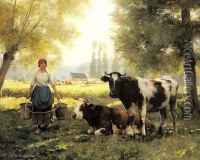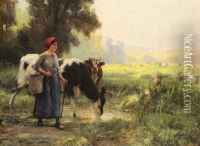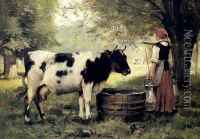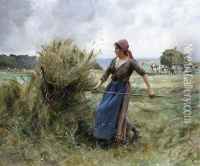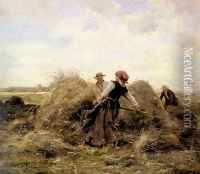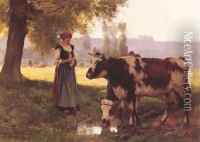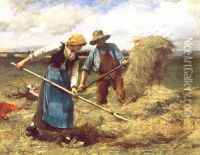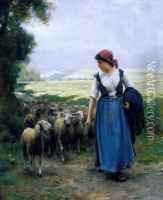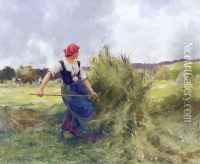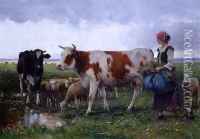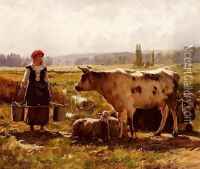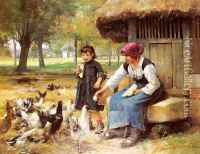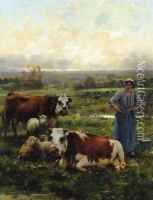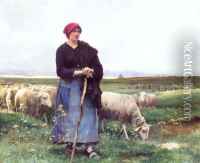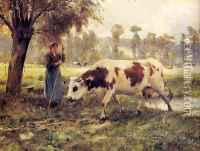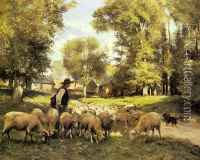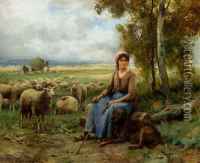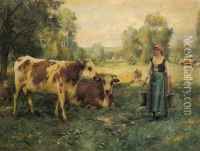Julien Dupre Paintings
Julien Dupré was a prominent French painter, born in 1851 in Paris, France. Known for his mastery in the genre of pastoral scenes, Dupré was deeply influenced by the rural settings of his country, capturing the daily lives of peasants in his works. His artistic journey began at the École des Beaux-Arts where he studied under Isidore Pils and Henri Lehmann, two notable figures in French academic painting.
Dupré dedicated his career to the realistic portrayal of peasant life, often highlighting the dignity and toil of farm workers. His approach combined a rich, textural detail with dynamic compositions, distinguishing his work from his contemporaries. In 1876, he debuted at the Paris Salon, the official art exhibition of the Académie des Beaux-Arts in Paris. His works quickly gained recognition, and he was awarded several medals at the Salon and the Exposition Universelle.
Throughout the 1880s and 1890s, Dupré’s popularity continued to grow both in France and abroad. His paintings were characterized by their vibrant depiction of the French countryside and the labor-intensive activities of its inhabitants, rendered with a deep sense of empathy and realism. Notable works from this period include 'The Haymakers', 'La Récolte des Foins', and 'Shepherdess with Her Flock', which exemplify his skill in using light and shadow to depict both the harshness and the beauty of rural labor.
Dupré's influence extended beyond France, impacting the development of rural genre painting in Europe and America. His commitment to depicting the agricultural life did not wane until his death in 1910. Today, Julien Dupré is celebrated for his contributions to French art and his role in immortalizing an idealized yet poignant view of peasant life at the turn of the 20th century.
